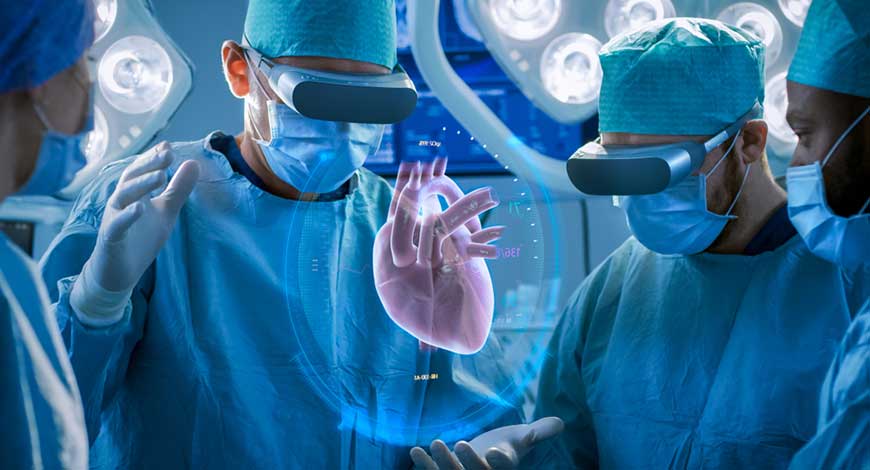What’s the first thing that comes to your mind when we talk about Virtual Reality (VR)? You may have pictured a person wearing a headset immersed in gaming. But what if I told you that the uses of VR are not just limited to gaming but can also be an integral part of medicine? It can be used for treating various health conditions, including neurological illness. VR is yet another computer-based technology that has many applications. We spoke to Dr Avinash Kulkarni, Consultant Neurologist, Gleneagles BGS Hospital, Kengeri, Bengaluru, who explained the role of VR in healthcare, its benefits, and its uses.
What is virtual reality?
“Virtual reality, or VR, is a simulated three-dimensional (3D) environment that enables users to explore and engage with virtual settings. This immersive experience closely resembles reality as it is perceived through users’ senses. The virtual environment is generated using software, and participants may need to wear equipment like goggles, headsets, or bodysuits to interact with it effectively,” said Dr Kulkarni.
Role of VR in healthcare
VR technology has become a useful tool for assessing and improving cognitive abilities, helping in rehabilitation and supporting research. According to the 2024 study, VR has the potential to improve patient care, enhance medical training, and raise the overall quality of healthcare. With immersive training simulations and advanced pain management techniques, VR offers innovative ways to achieve better results for both patients and healthcare providers.
Benefits of VR systems
VR systems allow users to interact in various sensory environments and to obtain real-time feedback on their performance without exposing them to risks while using computer technology. “Patients can engage in activities in settings and locations similar to those they would face in real life thanks to the simulated environments provided by VR technology,” added Dr Kulkarni.
Applications of VR in healthcare
Here are some medical applications of VR as listed by Dr Kulkarni:
Pain, Anxiety, and Distraction Management
Some VR applications used in healthcare can help ease pain, reduce anxiety, and provide distraction. Patients can immerse themselves in environments of their preference, leading to better mental health and an improved quality of life.
Cognitive training
VR can also be used for cognitive training. Patients can work on their cognitive abilities by playing games that integrate physical exercise, enhancing mental and physical capacities.
Physical and neurological rehabilitation
One of the most complex applications of VR in healthcare is in physical and neurological rehabilitation. These programs offer functional goals built into interactive VR games, making therapy more enjoyable and engaging. Patients can rebuild neurological pathways while meeting their exercise and workout needs.
According to BMC Neurology Open, most VR treatments focus on rehabilitation, especially for improving movement-related issues in neurology. These programs recreate traditional therapy exercises in a virtual setting. For stroke patients, VR therapy has shown results similar to standard rehabilitation in improving movement abilities. When used alongside regular therapy, it has significantly enhanced upper limb function and hand coordination. Additionally, VR-based therapy has been just as effective as traditional methods in improving walking and balance in people with Parkinson’s disease.
Examples of VR applications in healthcare
Driving assessment after brain injury
VR can simulate driving scenarios for patients recovering from brain injuries. These simulations help patients regain their ability to drive by addressing cognitive, motor, and sensory factors.
Virtual classroom scenario
A virtual classroom scenario consists of a standard rectangular classroom environment containing desks, a teacher, a blackboard, a side wall with large windows, etc. Within this scenario, children’s attention performance can be assessed while regular classroom distractions are systematically controlled and manipulated within the Virtual Environment (VE).
Bottomline
Dr Kulkarni concluded, “The price of VR devices will become more affordable for most Indian patients in the coming years due to better technology and local production. When used correctly by trained professionals, VR devices can greatly help neurorehabilitation. Soon, we might see stroke patients using VR goggles for their physiotherapy, dementia patients using VR to boost their memory, and children with ADHD using VR devices to improve their focus. Although we still have a long way to go, it’s exciting to think about the future for patients with neurological issues.” Onlymyhealth

Leave a Reply